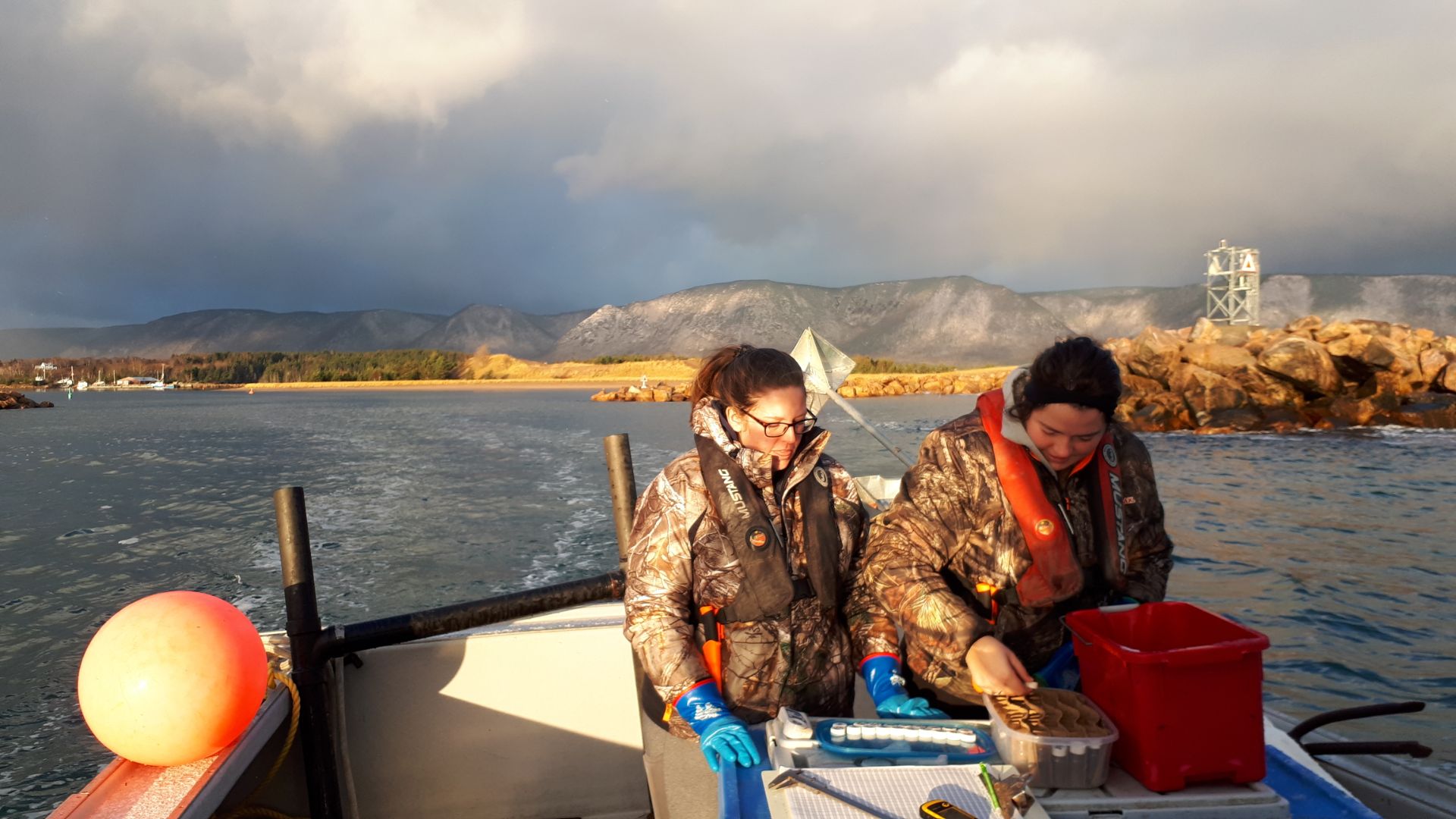


Quality Monitoring
Since 2014, the Cape Breton Fish Harvesters Association has been working to understand and document how the quality of lobsters is affected by their entire life process, including the Canadian lobster fishery. From a lobster’s natural cycle to initial harvest, plus storage and transportation, we're taking samples along the way to learn and grow the Canadian seafood market.
And we are not alone. Quality is a huge project. Many other science and fishery groups have been working on the methodology and results of monitoring quality. Some, like the Fisherman’s Science Research Society (FSRS), have been working on lobster quality since 2004. The industry has learned a lot.
Many lobster harvesters know the value of quality. A strong healthy lobster is worth more. Maintaining quality is harder and can mean keeping handling to a minimum and being mindful of storage and the conditions put upon that animal. It can also mean understanding a lobster’s natural biological cycles. For example, molting can be a huge stress and tremendous effort for a lobster. We know from this kind of work that quality drops right after a molt. This informs fishing seasons in different regions.

Figure 1. Blood protein levels (BRIX%) graphed over molt stage of American Lobster
A huge portion of Canadian lobster is sold in international markets, to be exact, 78% of those sales are from Nova Scotia. We have a booming industry, but we also have room for improvement. Currently, 20% of lobsters die before reaching international customers. It comes down to the health of the animal and what we can do along the way to maintain that health.
While procedures are coming into place for harvesters, buyers, and shippers on best handling practices, science can tell us much of what is happening inside the lobster’s body. Animal’s muscles hold sugars (glycogen). The amount of sugar stored should be high in a healthy, well-rested animal. After the animal has died, the sugars turn into lactate, which firms the muscles, causing rigor mortis. Lactate is what produces the meat and determines the quality of it. Stress can also kickstart the shift from sugar into lactate. Depending on the amount transferred, it can ruin the quality of the meat or cause mortality in the animal. The lobsters caught in LFA27 can have a rigorous journey from ocean to plate and the industry is working to discover new and better ways of harvesting, holding, and shipping live lobster with reduced stress, lower levels of product loss, and a better product.
Below is a video of our former Executive Director, Adena, doing protein sampling in the field. She measured the carapace of the lobster, looked at the overall health (e.g. sex of the lobster, the culls, etc), took a sample of their lactic acid, and put it on the refractometer to measure the Brix % (the protein) of the lobster.


Collecting Blood Samples
Lobster technicians with CBFHA are trained to carefully extract a sample of the lobsters' blood and examine it to record protein levels from the field in real time.
The protein count is recorded along with information about the lobster, including where it was landed, its size, sex, overall health, and molt stage.
Collecting Pleopod Samples
The pleopod is gently snipped from the lobster and placed in seawater to be examined under the microscope. Researchers look for the "meat" and its behavior to determine what stage in the molting cycle the lobster is currently in. This can explain a lot, including a direct link to the blood protein levels.
Moult Stages in Lobster

